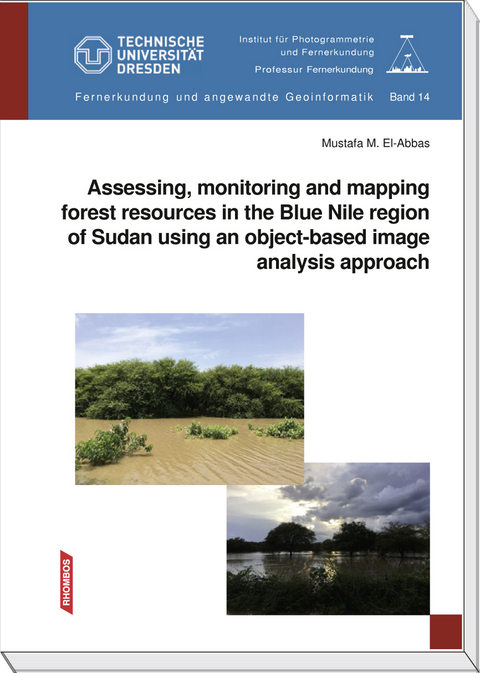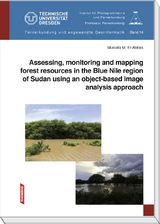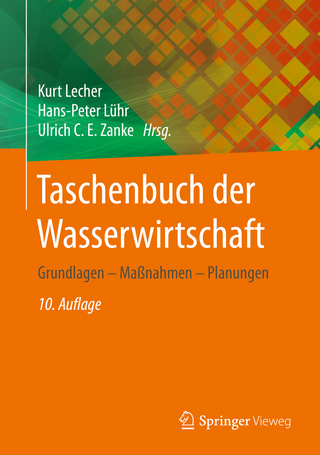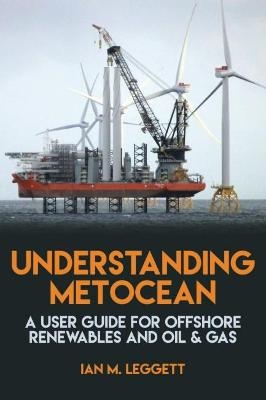Assessing, monitoring and mapping forest resources in the Blue Nile region of Sudan using an object-based imageanalysis approach
Rhombos-Verlag
978-3-937231-71-6 (ISBN)
Following the hierarchical nature of forest resource management, this research focuses on the monitoring and assessment of forest cover at various abstraction levels based upon categorical land use/land cover (LU/LC) classification and change detection as well as empirical estimation of changes at local operational levels. An approach of object-based image analysis (OBIA) based on optical sensor data has been adapted and applied in the destabilized Blue Nile region of Sudan in order to gather the required spatial information in support of future forest planning and decision making. At the categorical level rules have been developed and optimal features have been extracted for each segment. Based on thematic LU/LC maps series of optimised algorithms have been created to depict the dynamics of change of LU/LC entities. Detailed change classes as well as change statistics have been produced. Moreover hot-spot areas have been investigated and aggregated to the community-level. The study utilised a well-designed questionnaire to address the factors affecting LU/LC dynamics and the possible solutions based on the perception of local communities. At the operational structural forest stand level correlation and regression analyses have been applied to identify the relations between a wide range of spectral and textural metrics and the field-derived forest attributes. Furthermore the best fitting models have been cross-validated with an independent set of field samples, which revealed a high degree of precision. The research concludes that OBIA shows a significant capability to serve as an efficient approach to gaining accurate knowledge about land-related features, whether at the level of operational structural forest attributes or at the level of categorical LU/LC classification and change detection. Moreover, the developed methodological framework exhibits a potential solution to attain precise facts and figures about the dynamics of change and their driving forces.
Following the hierarchical nature of forest resource management, the present work focuses on the natural forest cover at various abstraction levels of details, i.e. categorical land use/land cover (LU/LC) level and a continuous empirical estimation of local operational level. As no single sensor presently covers absolutely all the requirements of the entire levels of forest resource assessment, multisource imagery (i.e. RapidEye, TERRA ASTER and LANDSAT TM), in addition to other data and knowledge have been examined. To deal with this structure, an object-based image analysis (OBIA) approach has been assessed in the destabilized Blue Nile region of Sudan as a potential solution to gather the required information for future forest planning and decision making. Moreover, the spatial heterogeneity as well as the rapid changes observed in the region motivates the inspection for more efficient, flexible and accurate methods to up-date the desired information.
An OBIA approach has been proposed as an alternative analysis framework that can mitigate the deficiency associated with the pixel-based approach. In this sense, the study examines the most popular pixel-based maximum likelihood classifier, as an example of the behavior of spectral classifier toward respective data and regional specifics. In contrast, the OBIA approach analyzes remotely sensed data by incorporat-ing expert analyst knowledge and complimentary ancillary data in a way that somehow simulates human intelligence for image interpretation based on the real-world representation of the features. As the segment is the basic processing unit, various combinations of segmentation criteria were tested to separate similar spectral values into groups of relatively homogeneous pixels. At the categorical subtraction level, rules were developed and optimum features were extracted for each particular class. Two methods were allocated (i.e. Rule Based (RB) and Nearest Neighbour (NN) Classifier) to assign segmented objects to their corresponding classes.
Moreover, the study attempts to answer the questions whether OBIA is inherently more precise at fine spatial resolution than at coarser resolution, and how both pixel-based and OBIA approaches can be compared regarding relative accuracy in function of spatial resolution. As anticipated, this work emphasizes that the OBIA approach is can be proposed as an advanced solution particulary for high resolution imagery, since the accuracies were improved at the different scales applied compare with those of pixel-based approach. Meanwhile, the results achieved by the two approaches are consistently high at a finer RapidEye spatial resolution, and much significantly enhanced with OBIA.
Since the change in LU/LC is rapid and the region is heterogeneous as well as the data vary regarding the date of acquisition and data source, this motivated the implementation of post-classification change detection rather than radiometric transformation methods. Based on thematic LU/LC maps, series of optimized algorithms have been developed to depict the dynamics in LU/LC entities. Therefore, detailed change “from-to” information classes as well as changes statistics were produced. Furthermore, the produced change maps were assessed, which reveals that the accuracy of the change maps is consistently high.
Aggregated to the community-level, social survey of household data provides a comprehensive perspective addi-tionally to EO data. The predetermined hot spots of degraded and successfully recovered areas were investigated. Thus, the study utilized a well-designed questionnaire to address the factors affecting land-cover dynamics and the possible solutions based on local community's perception.
At the operational structural forest stand level, the rationale for incorporating these analyses are to offer a semi-automatic OBIA metrics estimates from which forest attrib-ute is acquired through automated segmentation algorithms at the level of delineated tree crowns or clusters of crowns. Correlation and regression analyses were applied to identify the relations between a wide range of spectral and textural metrics and the field derived forest attributes. The acquired results from the OBIA framework reveal strong relationships and precise estimates. Furthermore, the best fitted models were cross-validated with an independent set of field samples, which revealed a high degree of precision. An important question is how the spatial resolution and spectral range used af-fect the quality of the developed model this was also discussed based on the different sensors examined.
To conclude, the study reveals that the OBIA has proven capability as an efficient and accurate approach for gaining knowledge about the land features, whether at the operational forest structural attributes or categorical LU/LC level. Moreover, the methodological framework exhibits a potential solution to attain precise facts and figures about the change dynamics and its driving forces.
Mustafa M. El-Abbas is an assistant professor at the Faculty of Forestry, Department of Forest Management, University of Khartoum, where he obtained his B.Sc. (Hons.) and M.Sc. degrees (2001 and 2006 respectively). Moreover, he has got a diploma of forest ecology and forest resource management from the University of Helsinki, Finland, in 2006. Dr. El-Abbas took his doctoral degree in remote sensing at TU Dresden.
Prof. Dr. Elmar Csaplovics obtained a doctorate in remote sensing at TU Wien in 1982. He was a post-doc research fellow at the French National Institute for Agricultural Research (INRA) in Montpellier and at the Department of Geology, Geophysics and Geoinformatics, FU Berlin 1988-1992. After habilitation in remote sensing at TU Wien he is professor of Remote Sensing at TU Dresden since 1993. He was visiting professor at University College London (2007), at Université Paris VII Denis Diderot (2014) and at TU Wien (2015). His research focus is on remote sensing and applied geoinformation analysis for monitoring and assessment of land use land cover with emphasis on wetlands, arid lands, landscape history and natural heritage.
Table of contents
List of tablesXIII
List of figuresXV
Acronyms and abbreviationsXVII
ABSTRACT1
Kurzfassung3
1Introduction5
1.1Background and motivation5
1.1.1Overview5
1.1.2Deforestation and land degradation6
1.1.3Remote sensing and forest resource assessment7
1.2Research hypotheses9
1.3Objectives10
2Study area13
2.1Overview13
2.2Introduction to the study area13
2.2.1General description13
2.2.2Vegetation14
2.2.3Climate15
2.3Test sites17
2.3.1LU/LC level17
2.3.2Forest stand level.18
3Theoretical background19
3.1Overview19
3.2Introduction19
3.3Object based image analysis20
3.3.1Image segmentation21
3.3.2Image objects hierarchy23
3.3.3Image object information extraction and feature measures24
3.3.4Nearest neighbour classification28
3.3.5Rule based classification29
3.3.6An application of object-based approach for mapping earth surface features30
3.3.7Quality assessment37
4Data and research approaches39
4.1Overview39
4.2Data39
4.2.1Earth observation data39
4.2.2Field survey data42
4.3Methodology45
4.3.1Atmospheric correction45
4.3.2Geometric correction46
4.3.3Image classification47
4.3.4Change detection56
4.3.5Classification accuracy assessment57
4.3.6Forest parameters estimation and model validation57
5Land use/ land cover analyses63
5.1General overview63
5.2Pixel-based classification of Aster imagery by maximum likelihood (ML) classifier64
5.3OBIA approaches66
5.3.1Segmentation result66
5.3.2Hierarchical classification67
5.3.3Object-based classification of Aster imagery by Nearest Neighbor
(NN) classifier69
5.3.4Object-based classification of Aster imagery by rule-based (RB) method72
5.4OBIA vs. per pixel classification74
5.4.1Classification of agricultural land76
5.4.2Classification of residential areas78
5.4.3Discrimination of vegetation classes80
5.5Scale issue and hierarchical OBIA for mapping LU/LC82
5.5.1Overview82
5.5.2Pixel-based classification of higher resolution RapidEye scene83
5.5.3Object-based classification of higher resolution RapidEye scene85
5.5.4Overall assessment of the approaches based on the two selected scales87
5.6Summary88
6Spatiotemporal analyses and driving forces91
6.1General overview91
6.2Land use/ land cover classification and accuracy assessment92
6.2.1Land use/ land cover classification92
6.2.2Accuracy assessment based on error matrix94
6.2.3Accuracy assessment based on best classification result95
6.3Distribution of LU/LC during the periods 1990, 1999 and 200997
6.3.1Trend, rate and magnitude of land use/ land cover changes98
6.4Spatiotemporal object-based post-classification analysis101
6.4.1Forest cover change dynamics 1990- 1999103
6.4.2Forests cover change dynamics 1999- 2009106
6.4.3Overall evaluation of the adopted approach in mapping forest cover change dynam-ics111
6.5Major driving forces of forest cover loss and restoration problems115
6.5.1Deterioration of forest cover in the area115
6.5.2Driving forces of forest cover loss115
6.5.3Restoration of destroyed forests117
6.6Summary119
7Object-based texture measures and forest inventory121
7.1General overview121
7.2Segmentation122
7.3Descriptive analysis of field data123
7.4Image metrics and forest inventory125
7.4.1Volume125
7.4.2Height125
7.4.3Density126
7.4.4Basal area127
7.5Development of the regression model to estimate Acacia nilotica stand volume128
7.5.1Model validation131
7.6Mapping forest stand volume in Alambwa Acacia nilotica pure stand133
7.7Summary134
8Conclusions, recommendations and future work137
8.1Conclusions137
8.1.1Overview137
8.1.2Land Use/ Land cover categorical level137
8.1.3Integrated framework of change analysis138
8.1.4Continuous forest structural attributes level139
8.2Recommendations140
8.3Limitations141
8.4Future work141
References143
Appendixes163
Editorial Nothing is more pleasant than the country around Sennaar, in the end of August and beginning of September [ …]; instead of that barren, bare waste, which it appeared on our arrival in May (1772, editor’s note), the corn now sprung up, and covered the ground, made the whole this immense plain appear a level, green land, inters-persed with great lakes of water and ornamented at certain intervals with groups of villages, the conical tops of the houses presenting, at a distance, the appearance of small encampments. Through this immense, extensive plain, winds the Nile, a delightful river there, above a mile broad, full to the very brim, but never overflowing. Every where on these banks are seen numerous herds of the most beautiful cattle of various kinds, the tribute recently extorted from the Arabs, who, freed from all their vexa-tions, return home with the remainder of their flocks in peace, at as great a distance from the town, country, and their oppressors, as they possibly can. Bruce of Kinnaird J (1791) Travels to discover the sources of the Nile, in the years 1768, 1769, 1770, 1771, 1772, and 1773, in six volumes, vol V, ch IX, p 231f Sub-Saharan semiarid regions suffer from increasing local impact on vegetation canopies in terms of overgrazing by herds and flocks, overexploitation of soils by rainfed agriculture neglecting fallow cycles and fuelwood consumption as well as illegal timber extraction. Subregional to local variations in extent and severity of impact are due to varying patterns of socioeconomic and socio-political pressure on the local people and are furthermore driven by gradients of migration of people displaced from their homelands due to ethnical and economic reasons. Mapping state and changes of land use and land cover is often focusing on monitoring and analysing the effects of longterm to mediumterm climatic variations towards their impact on specific ecoclimatic zones. This approach is more and more blamed for its neglect of regional and subregional variations of drought phenomena via arguing that the whole mechanism is much more complex in terms of causes and reasons of land cover changes. Local to regional patterns of land use land cover change have to be assessed and analysed much more intensively. Besides parameters of climatic change such as variations in periodicity and decline of amount of rainfall, increasing impact of strong winds and of temperature variations, spatiotemporal information on regional and local land use and land cover change as a mirror of anthropozooic impact has to be collected in a much more holistic way. It is obvious that the latter is responsible for severe land degradation, thus creating a circulus vitiosus which more and more deteriorates the livelihood of indigenous people. Local patterns of vegetation status and change are to be assessed in high spatio-temporal resolution in order to get a better idea about the interrelated effects of human impact on land degradation, deterioration of livelihood and subsequent abandonment of the land. Remote sensing of the environment by (very) high resolution spaceborne imagery provides the perfect tool and methodological background for collecting, maintaining, analysing and visualising spatiotemporal data which are capable to describe land use and land cover change in different scales both quantitatively as well as qualitatively. Semi-arid regions of sub-Saharan Africa differ significantly in terms of their environment, their equipment with natural resources and their socio-political condition. Availability of water throughout the year is an advantage which attracts both displaced as well as migrating people and their herds and flocks. Conflicts with regard to rights of water and land use between local and migrating people are inevitable. Thus besides eco-climatic conditions the far more significant driving force of land degradation is resulting from socio-economic and socio-political instabilities, which change both in time (from seasonal to multi-annual) as well as in space (from the water hole level to the local land management level). It is self-evident that especially the riverine environments along the large rivers crossing the sub-Saharan drylands are and have been the focal points of settlement and land exploitation, the Nile and Niger rivers being both the most significant ancient as well as recent representatives. The kingdom and town of Sennar came into power after the invasion of the Funj people from nowadays southern Sudan (Sudd) at the beginning of the 16th century. It found its peak during the 17th century when territorial expansion reached its apogee by extending the territory as far as to Southern Kordofan in the west and Dongola in the north. The Funj Sultanate of Sennar (Sinnar) lasted till 1821 when Turkish influence which grew since the late 18th century culminated in a peaceful invasion. After the resignation of the last king the territory was assimilated into the Ottoman Egypt. The old capital of Sennar extended approximately 20km north-northwest from the new town. A milestone in rural development driven by colonial policies was the establishment of the Sennar dam in 1925 by the English colonial administration, aiming at fostering irrigation agriculture (dominantly cotton, then more and more replaced by wheat) in the Gezira scheme (founded 1911) bordering Sennar State in the northwest. Till a few years ago the town of Sinja was the capital of Sennar State, but Sennar itself was always and is still the largest town in terms of the number of inhabitants. Population has multiplied by five from 1973 to 2007, thus proving significant migration. Reasons are closely related to socio-political threats such as the Ethiopian-Eritrean and the South Sudan conflicts, associated with socio-economic pressure due to overexploitation of resources caused by accumulation of different, often controversial demands on land use. Severe impacts are driven by an ongoing trend towards mechanised farming based on rainfed agriculture which threatens sensible soil strata and leads to degradation and subsequent decline of crop yields. At the same time riverine forests along the Blue Nile are affected by often illegal fuelwood and timber extraction as well as grazing activities. The monitoring and assessment of forest resources along the Blue Nile is a matter of highest priority under the tasks of the Sudanese Forest National Cooperation (FNC). The multitude and heterogeneity of socio-ecological and socio-economic driving factors of soil and vegetation degradation calls for a sound and reliable methodology of spatio-temporal monitoring of patterns of land use and land cover changes as well as a subsequent critical analysis of parameters of efficiency and integrability of spaceborne remote sensing for management and planning of protective and restorative measures of policies of forest management and forest conservation. Mustafa El-Abbas focuses on that issue by implementing multisource and multi-resolution operational earth observation via (very) high resolution imagery of Terra Aster and RapidEye sensor systems and by analysing the potential of object-based image analysis for multiscale monitoring from the level of categorical land use land cover classes to the level of forest structural attributes such as average stand height and especially forest stand volume. Mustafa El-Abbas provides an extensive and at the same time in-depth research into the innovative assessment and evaluation of up-to-date imagery and image analysis for forest management purposes in the semiarid environment of forests along the Blue Nile. It is obvious that Mustafa El-Abbas is perfectly capable to accumulate, condense and extend as well as to apply a wealth of target-oriented knowledge of the local and regional characteristics of land cover and land use change in the Blue Nile region in general and of forest cover change and forest structure on the stand level with specific regard to pure riverine Acacia nilotica stands in particular. Balboch is on the eastern bank of the Nile, not a quarter of a mile from the ford below. The river here runs north and south; towards the sides it is shallow, but deep in the middle of the current, and in this part it is much infested with crocodiles, Sennaar is two miles and a half S.S.W. of it. We heard the evening drum very distinctly […] Bruce of Kinnaird J (1791) Travels …, vol V, ch VII, p 177 The banks of the Nile about Sennaar resemble the pleasantest parts of Holland in the summer season; but soon after, when the rains cease, and the sun exerts its utmost influence, the dora [millet] begins to ripen, the leaves to turn yellow and to rot, the lakes to putrify, smell, and be full of vermin, all this beauty suddenly disappears. Bruce of Kinnaird J (1791) Travels …, vol V, ch IX, p 232 The overall scientific value and reliability of the research presented by Mustafa Elabbas is evident. It is challenging to realise that based on the well-structured, detailed and in-depth work of Mustafa El-Abbas a clear perspective for a multi-level regionalisation of multi-sensor and multi-resolution earth observation data analysis for purposes of forest management from the categorical land use land cover level to the local forest stand level is made possible. The presented performance of operational satellite imagery of very high (geometric) resolution and of object-based image analysis for monitoring and assessment of forest canopy characteristics in different scales is providing a promising baseline for a significant improvement of forest management issues in drylands of semi-arid sub-Saharan Africa, where accessibility of terrain is limited and dynamics of change both resulting from migration gradients as well as from subsequent anthropozooic impact on natural resources, especially on ligneous layers of vegetation, are highly frequent. The research of Mustafa El-Abbas contributes significantly to a better understanding of causes and reasons of degradation of forest canopies in semiarid environments at a regional to local scale. The complexity of driving factors of forest degradation along the Blue Nile valley has strong spatio-temporal characteristics. It is evident that impacts are driven by complex factors which are connected in a multifold thematic network of interrelations of both economic as well as political and ecological, climatic, geomorphological and biogeographical parameters. Mustafa El-Abbas provides an important and innovative contribution to an improvement of the monitoring of forest cover and forest use at the multi-scale and multi-temporal level which represents a cornerstone for establishing a sound forest management in the Blue Nile region of the Sudan and beyond. Dresden, April 2017 Elmar Csaplovics
| Erscheinungsdatum | 29.01.2019 |
|---|---|
| Zusatzinfo | numerous illustrations, many of them colored. |
| Verlagsort | Berlin |
| Sprache | englisch |
| Maße | 250 x 176 mm |
| Gewicht | 500 g |
| Themenwelt | Naturwissenschaften ► Geowissenschaften ► Meteorologie / Klimatologie |
| Schlagworte | Forest • Image Analysis • Landsat TM • land use • rapideye • Terra ASTER • Waldressourcenmanagement |
| ISBN-10 | 3-937231-71-4 / 3937231714 |
| ISBN-13 | 978-3-937231-71-6 / 9783937231716 |
| Zustand | Neuware |
| Haben Sie eine Frage zum Produkt? |
aus dem Bereich




